See also:
Kabuki Theatre, 1911-1951
Kabuki theater, and Kabuki actors
How Faubion Bowers Saved Kabuki
“Kabuki is a matter of beauty in a flash, that a movement in the flash of a second determines all … what you can only conclude to be a divine act, a marvelous moment of an act, which the actor who has completely thrown himself into his role flashes forth, something no ordinary mortal can accomplish.
“Kabuki is not kabuki unless it can intoxicate you instantly.”
– Yukio Mishima, speaking to a class of Kabuki trainees at the National Theatre [Kokuritsu Gekijou], 1970
From the wiki: “The kabuki stage features a projection called a hanamichi [flower path], a walkway which extends into the audience and via which dramatic entrances and exits are made. The stage is used not only as a walkway or path to get to and from the main stage, but important scenes are also played on the ‘path’.
“Kabuki stages and theaters have steadily become more technologically sophisticated, and innovations including revolving stages and trap doors were introduced during the 18th century. A driving force has been the desire to manifest one frequent theme of Kabuki theater, that of the sudden, dramatic revelation or transformation. A number of stage tricks, including actors’ rapid appearance and disappearance, employ these innovations.
“Performances can last six hours or more, with long intermissions between the acts: some are 25-minutes long in order to permit the audience to partake of a meal in one of the theater restaurants.”
Kabukiza (Tokyo) interior views
- Hall, Kabukiza, Tokyo, c. 1960.
- Full view of the auditorium, Kabukiza, Tokyo, c. 1960.
- Dining room, Kabukiza, Tokyo, c. 1960.
- Japanese sushi restaurant, Kabukiza, Tokyo, c. 1960.
- Special room, Kabukiza, Tokyo, c. 1960.
- Kabukiza, sidewalk view, Tokyo, c. 1960.


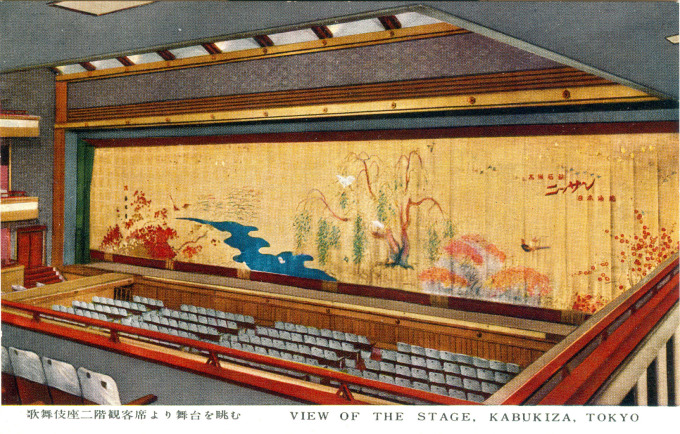
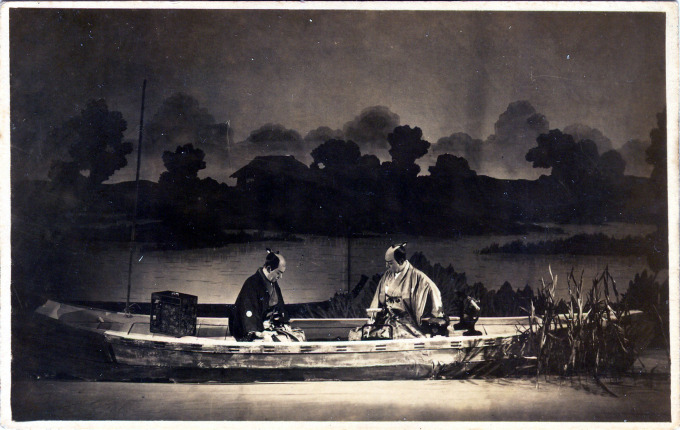
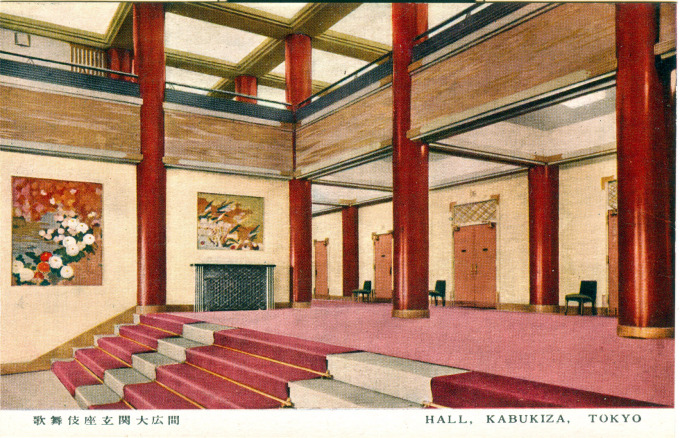
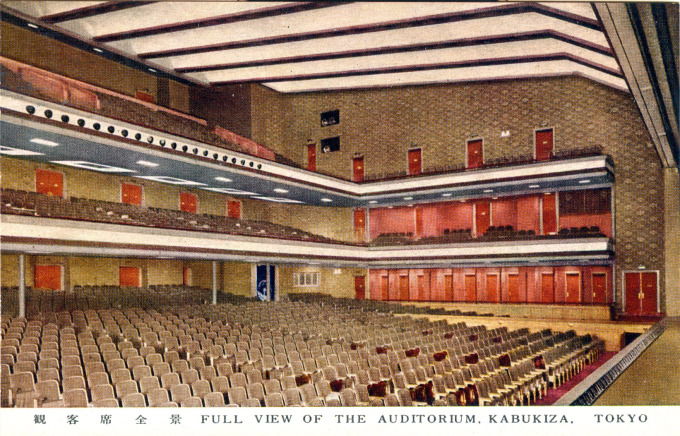
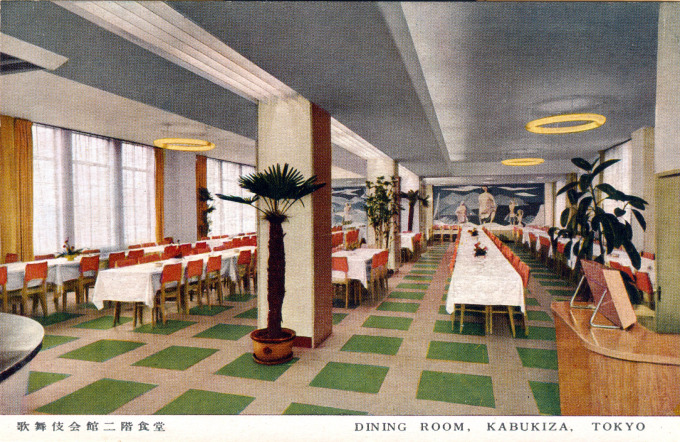
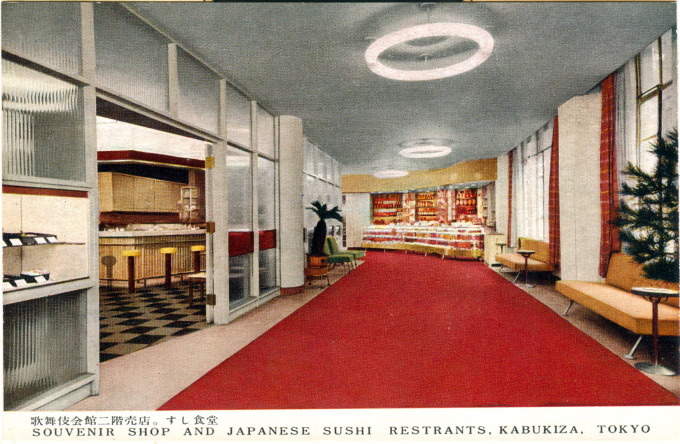
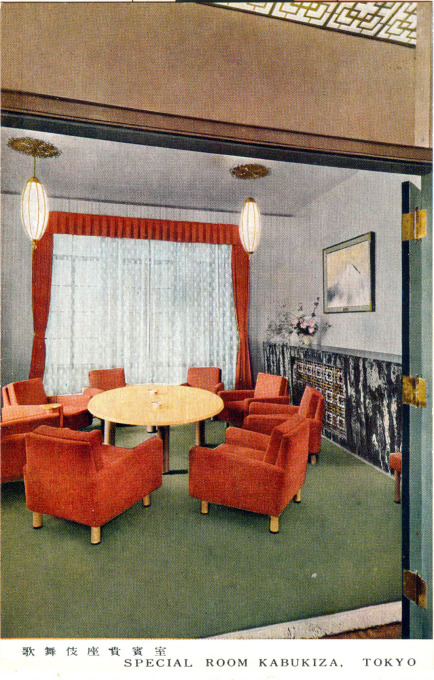
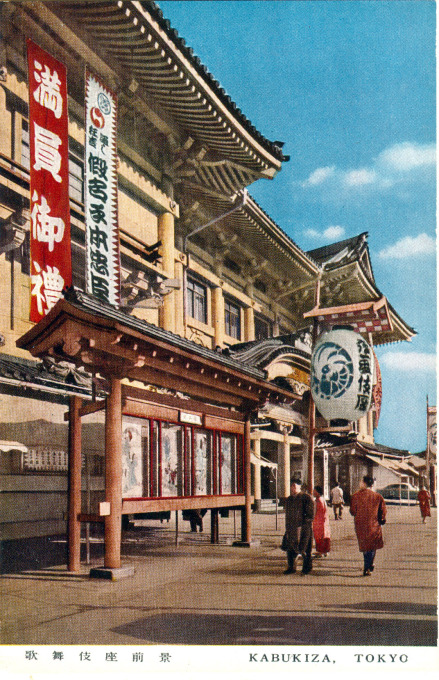
Pingback: Kabuki Theatre, Tokyo. | Old Tokyo
Pingback: 【2019東京旅遊】歌舞伎座(Kabuki-za)日本必看歌舞伎文化 - travo.guide 旅行推薦新媒體
Pingback: How Faubion Bowers Saved Kabuki. | Old Tokyo